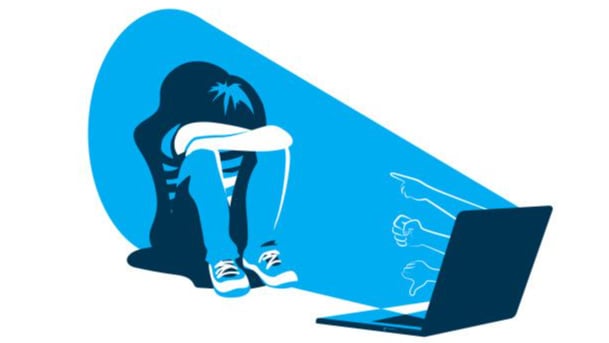The morning sets up the success of the whole day. So many people wake up and immediately check text messages, emails, and social media and forget about their immediate environment. It is so funny how social media was just this fun thing and now it’s the monster that consumes so many millennial lives. Social media is changing the way we interact and the way we are perceived, both positively and negatively. Every time a user posts a photo, or updates his/her status, he/she is contributing to the digital footprint and personal brand. Nowadays, we live in a culture where everyone’s opinion, ideas, and assessment of situations and people spill across social media, a lot of it anonymously, much of it shaped by mindless meanness and ignorance. Social media is a huge struggle for this generation. Looking at this reality one cannot but think about solutions to avoid abusing media which is making people slaves. This article discusses the different effects of social media on adolescents, presenting some solutions to avoid abusing social media.
Media today has many negative effects on adolescents. Be it television, computers, video games, social networking sites – it impacts all aspects of adolescents’ lives. Adolescents are spending much of their times chatting, playing games, and sharing photos. They have different platforms to access information that is not relevant and some use social media to cheat on exams. Users are not aware about the dangers of extreme self-express on social media. The social media platforms have encouraged the young ones to be more public about personal affairs that ought to remain private. Moreover, too much of something is dangerous. Social media has proved to be a detrimental to the health of the young ones. Excessive social media use results in ODD symptoms, hyperactivity/impulsivity, and sleep disorders. Adolescents who use social media at night don’t have time to sleep. Most of them develop stress as a result of inadequate sleep. Excessive social media use, especially at night is also linked to lower or reduced self-esteem among adolescents. This is because they spend much time reacting to posts of friends. As such, they become inactive during the day thus lowering their self-esteem. Increased use of social media causes poor mental ability or health. Furthermore, social media impacts adolescents psychologically. When adolescents feel depressed they usually opt for support and acceptance on social media. Such behavior may be exacerbated when adolescents experience ego threats, social rejection, loss of influence, or criticism. When adolescents see the highlights of other people’s lives, they might feel envious and too much envy can lead to depression. Moreover, the world is full of perfect public figures. Adolescents try to mimic celebrities’ lifestyles and compare themselves to their images. These images make them feel dissatisfied with the way they look. Body dissatisfaction is usually linked to mental health challenges, like eating disorders, depression, and low self-esteem. The media nowadays is so powerful and omnipresent, and adolescents aren’t able of escaping its tentacles.
With the advancement of technology and the rise of social media, today’s youth are being bullied inside their homes where they should feel safe. Cyber bullying takes place within every social media platform. Cyber bullying, usually referred to as “digital abuse”, is the new weapon for bullying. Bullying results in emotional issues especially anxiety and depression. Moreover, adolescents will have troubles getting along with their peers because bullying decreases their self-esteem. Some might experience physical symptoms such as frequent headaches and stomach pain. Adolescents might skip school and take drugs to forget their realities. In extreme cases cyber bullying might cause some victims to commit suicide. Bullying can leave users feeling disbelieved, vulnerable, and knock their self-esteem. Users are not aware about the dangers of extreme self-express on social media, which can lead to bullying and strangers may contact adolescents in their real lives especially when they give their real names, address, school, and phone number. Adolescents usually upload anything that might affect and embarrass them in their far futures. They might not realize it, but what they post on the internet can come back and cause them problems later, especially when they are admitting to a college or a new job. Depressed teens are more likely to be victims of cyber bullying, and as adolescents are experienced to more cyber bullying the more severe their symptoms of depression are. Thus, there is a causal relation between cyber bullying and depression. Alarmingly, some adolescents typically suffer from bullying silently. They are hesitant to tell their parents that they are being bullied because they fear that they might lose their Internet access. Therefore, there is a new playground for bullies: the social media. The most evident way to stop bullying is that there must be some people who can filter out some things. Filtering is a solution to avoid unwanted publication and SNS (Social Networking Services) should provide people with tools to manage what they see on social media. Unless the society understands cyber bullying for what it is, the suffering of many silent victims will continue.
Social media helps in spreading negativity among adolescents. It is so obvious that a negative message can spread wider and faster than a positive one. People usually respond to negative messages and share them even more than the positive and neutral ones. Some people try to draw attention to their suffering in order to get help for solving their problems, or to reduce their anger. However, negativity usually affects adolescents who sometimes try to blur the boundaries of their realities and escape to the imaginary world. Therefore, they might feel more and more depressed and this will cause them to commit suicide and sometimes take drugs. Reception effects are triggered when a user receives a message and this results in a change in his/her beliefs, attitudes and feelings. What one adolescent says in one place might spread to the entire globe and thus spreads negativity more and more and causes other adolescents to feel unhappy. Not only do people try to spread negativity, but also negative emotions such as hatred and anger. These emotions usually develop in adolescents and make them fall into a pattern of defeating behavior and thus threaten their egos. Moreover, happiness never comes without a price. This is the message that social media platforms try to convince adolescents about. Adolescents’ lives will be gloomy if they can’t buy what they want or can’t have what they need. In this way, social media is another world loaded with negative emotions that might affect adolescents.
However, some people believe that social media is beneficial to adolescents. It provides them with a sense of belonging. Everyone wants to be in touch with others. Social media helps adolescents connect with their role models and people who share common interests and concerns. Nevertheless, it increases bonding and decreases loneliness since it facilitates interaction between different people from different cultures and societies. It gives adolescents the chance to increase their social circle and make new friendships. Social media can also be useful in the domain of health. Adolescents improve their health habits as a result of what they read on social media. Moreover, social media can spread awareness among adolescents. Since many teens live a sheltered life, social media is vital in developing cultural and political awareness which leads to a generation of socially responsible citizens. Adolescents use social media to complete collaborative assignments. It provides them a space to share their ideas and plan their tasks. Different social media platforms allow adolescents to think outside the box and thus enhance their creativity and innovative thinking. From written content to photos and videos, there are many ways for adolescents to participate, engage, and show of their creativity. Adolescents can learn new things from articles on social media, or perhaps by watching videos on YouTube. Social media gives adolescents a voice. Many adolescents think like they’re not listened to, and others feel shy about speaking up in front of a crowd. However, social media provides them with new ways to express themselves in a different manner like writing and making images and videos. Smartphones provide adolescents with the opportunity to share new content and this creates a rewarding feedback. As such, adolescents can express their thoughts and ideas on social media platforms with their peers without being shy or hesitant. Still, the greatest danger might lie in the fact that social media can shape adolescents’ lives. Maladaptive use of SNS can have negative effects on the well-being of children, adolescents, and young adults. Adolescents are being less involved with their real life surroundings and with social issues. Moreover, there is a direct association between time spent on SNS and lower grades, less connection to peers, lower self-esteem, and depression. Excessive social media use can lead to internet addiction. Every time adolescents are exposed to new stories they would like to explore and try these ideas. This might develop a habit that can affect their mental health and school performance.
Despite the positive role of social media in today’s life, its high use can have various negative effects on adolescents. Social media can bring both positive and negative things into adolescents’ lives. At the end of the day, adolescents should decide whether there is more help or harm for them. Learning to maximize the benefits, while minimizing the negative effects is an important developmental evolution that adolescents should know to prevent abusing media. Social media is controlling adolescents’ lives and thus consuming their minds. Parents want the best for adolescents and try to protect them from the worst. So what can they do other than screaming and arguing? Parents should encourage their children to engage in real communications rather than online networking. Instead of lecturing adolescents about the pros and cons of social media, parents should encourage adolescents’ passion and interests like sports, hobbies, or social work. Parents should always have their children’s love, appreciation, and trust to solve any problem the children can experience. Moreover, parents should supervise children’s online activity, so they can protect them from online predators and bullies. Parents have to check with their adolescents to ensure that their online behavior is appropriate and adolescents must learn to differentiate between reality and fantasy. Parents should admit that their children are growing and they are one step away from adulthood, and that media will exist whether they like this or not. What parents can do is to sit as a family with their adolescents and try to win their trusts so they can prevent social media abuse. For many parents, navigating their adolescents’ social media usage is worrisome and challenging. However, with right approach parents can be good examples for their children, monitor their online behavior, and teach them to use social media responsibly and respectfully.





